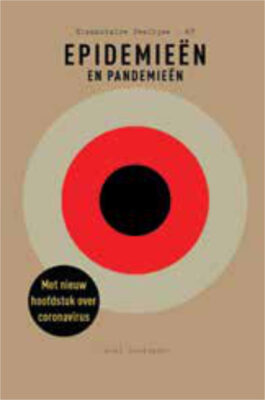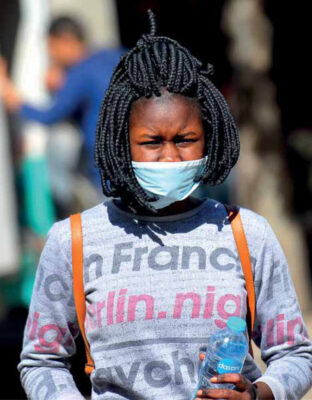Main content
By Roel Coutinho
Singel Uitgeverijen
ISBN 978 90 253 1257 2/ NUR 680
Fifth edition 2020, 159 pages, in Dutch
Roel Coutinho, medical doctor and microbiologist, emeritus professor of Life Sciences at the Utrecht University Medical Center (UMC) and former director of the Centre for Infectious Disease Control (CIb) in the Netherlands, takes us on a journey of discovery to many corners of the globe where epidemics occurred, some of which developed into pandemics. He writes extensively about the spread of HIV from 1980 onwards, the Ebola outbreak in 2014, the cholera epidemic in Haiti after the 2010 earthquake, and the 2009 swine flu pandemic. It is an account of recent epidemics and pandemics that have gripped the world and cost many lives. The author shows how these, as well as age-old infectious diseases such as plague, cholera, and influenza, developed and spread, how professionals and affected populations coped with them, and to what extent they had been anticipated by epidemiologists, microbiologists and virologists. Other potential public health threats include biological warfare and declining vaccination coverage.

The earliest known case of HIV-1 infection was in 1959 in Kinshasa, Democratic Republic of the Congo. However, HIV exploded in the beginning of the 1980s worldwide, especially in Southern Africa where it caused 20% to 25% seropositivity among the general population with many people succumbing to AIDS and a steep decline in life expectancy as a result. Forty years later, it has become a chronic condition, and there is still no vaccine available. The 2009 Mexican flu and 1918 Spanish flu epidemics, especially the latter, took a huge death toll; probably one hundred million people died, more than in both world wars combined.
Another interesting chapter to read is about the cholera epidemic in Haiti, which started in 2010, brought into the country from Asia by Nepalese soldiers who were based on the island because of a devastating earthquake earlier that year. Yersinia pestis and plague are usually considered a problem of the past but plague was not uncommon during the Vietnam War due to acts of violence, and these days the disease is still endemic in Madagascar and in California, United States of America.
Ebola ravaged Western Africa from 2014; Guinea, Sierra Leone and Liberia suffered great losses. Many health personnel died. Following this outbreak, a vaccine was developed with a very high protection rate and formally approved and licensed by the World Health Organization (WHO) in November 2019. Agents that can be used as biological weaponry, such as anthrax, yersinia pestis, cowpox, and salmonella typhimurium, as well as diseases transmitted by mosquitoes, such as chikunkunya and malaria, are described with suggestions on how to deal with them in the future.
The anti-vax movement gets critical comments from the author; there are some 250,000 people in the Netherlands – mostly living in the so-called bible belt – who reject vaccination on religious grounds.
The book concludes with a reflexion on the recent Covid-19 pandemic. It shows that new infections as well as their spread are difficult to contain, resulting in enormous economic losses as well as social implications in our globalised world.
In his vote of thanks at the end of the book, the author emphasises that he himself has gained more insights in epidemics and pandemics while writing the book, and readers may experience the same.


















































